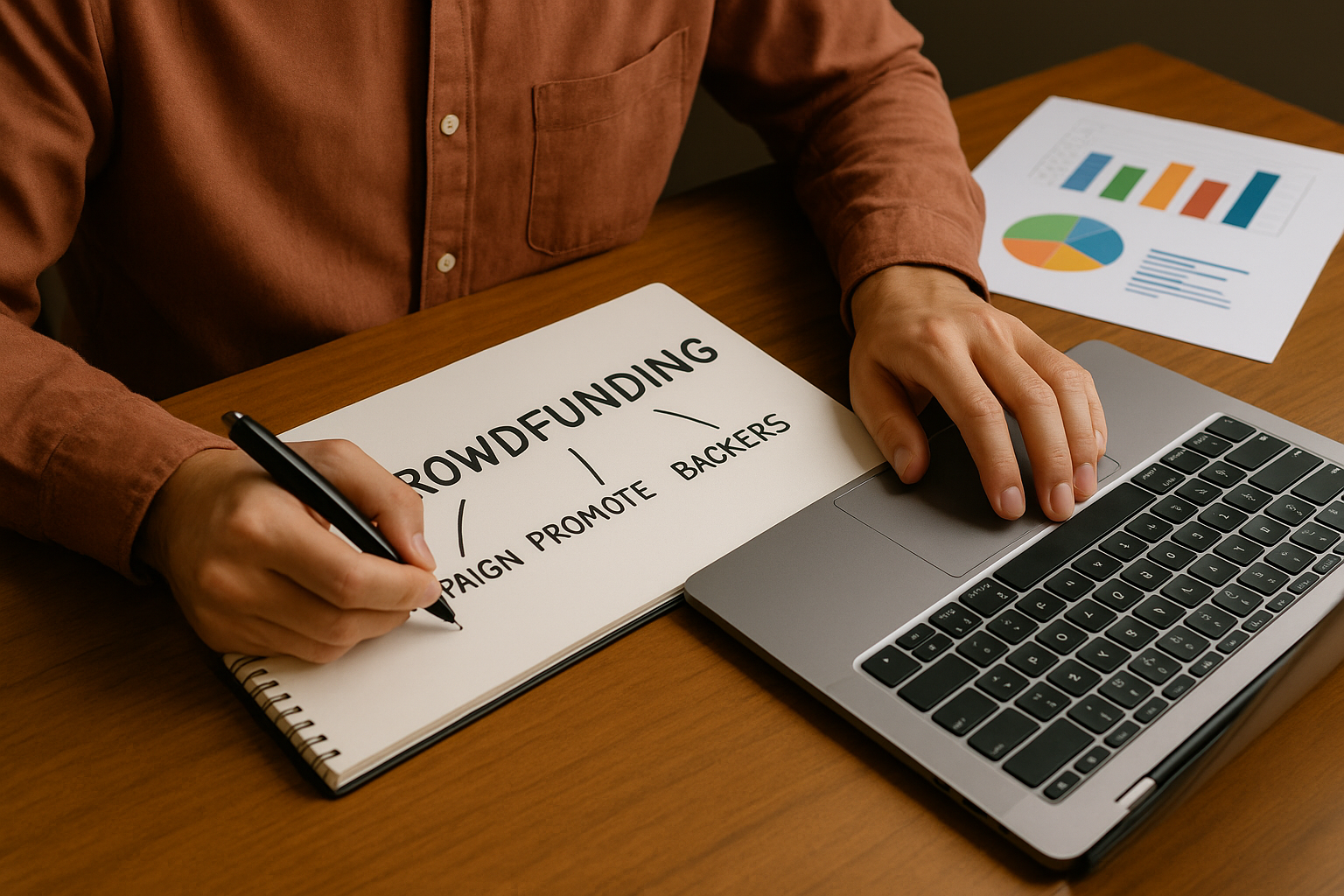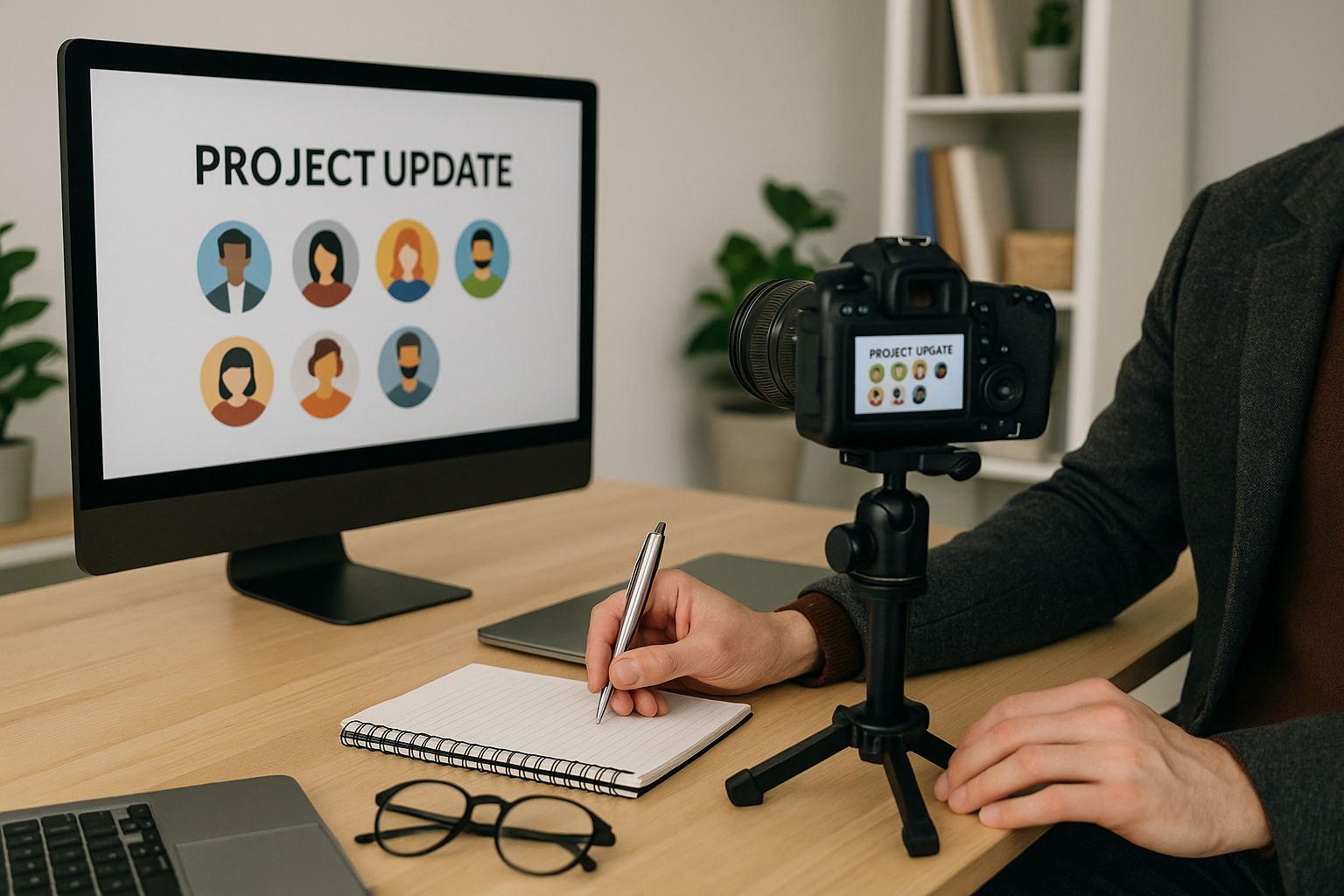How Does Crowdfunding Work? The Complete Step-by-Step Process

Crowdfunding operates on a simple yet powerful principle: instead of seeking large amounts from a few sources, you collect smaller contributions from many people to reach your funding goal.
But behind this straightforward concept lies a sophisticated ecosystem of platforms, payment systems, legal frameworks, and marketing strategies that work together to transform ideas into funded realities.
Understanding exactly how does crowdfunding work from the moment you create a campaign to receiving money raised in your bank account its crucial for anyone considering this fundraising platform method.
This detailed guide breaks down every step of the crowdfunding process, explaining the mechanics, timelines, and key decisions that determine successful crowdfunding campaign outcomes while helping you maximize funds raised through strategic raising money approaches.
Understanding the four main types of crowdfunding
Before diving deeper into how crowdfunding works, it’s essential to understand the types of crowdfunding available, as each operates differently and serves distinct purposes.
Donation-based crowdfunding
Donation-based crowdfunding represents the purest form of fundraising, where contributors give money without expecting tangible returns.
This model excels for personal causes, medical expenses, educational needs, and charitable initiatives. The money raised through donations helps individuals and organizations address immediate needs while building community support.
Reward-based crowdfunding
Reward-based crowdfunding offers contributors products, services, or experiences in exchange for their support.
This model drives innovation by allowing creators to pre-sell products, validate market demand, and raise money for manufacturing or development costs.
Successful crowdfunding campaign examples include tech gadgets, creative projects, and innovative consumer products.
Equity crowdfunding platform model
Equity crowdfunding platform systems allow businesses to offer ownership stakes to investors in exchange for capital.
This sophisticated approach to raising capital enables startups and growing companies to access funding while giving everyday investors opportunities to support promising ventures and potentially earn returns on their investments.
Peer lending systems
Peer lending creates alternative financing where individuals or businesses borrow money from multiple lenders with agreed repayment terms and interest.
This fundraising approach provides borrowers with potentially better rates than traditional banks while offering lenders investment returns
The crowdfunding ecosystem: Key players and components
Understanding how does crowdfunding work requires examining all participants in the fundraising ecosystem and their interconnected roles
Campaign Creators
Campaign creators are individuals, businesses, or organizations seeking funding for their projects, causes, or ventures.
They create and manage campaigns, tell their stories, and engage with potential supporters throughout the funding period.
Whether you’re planning a creative project, addressing a personal cause, or looking to expand your business, understanding your role as a creator is essential for a successful crowdfunding campaign.
For organizations specifically, our crowdfunding for nonprofits guide provides specialized strategies tailored to charitable fundraising
Contributors and Backers
Contributors (also called backers or supporters) are people who provide financial contribution to campaigns. They range from close friends and family to complete strangers who discover and connect with your project through various channels. Understanding contributor psychology is crucial for effective money raising strategies.
Crowdfunding Platforms
Platforms serve as the intermediary between creators and contributors, providing the technology infrastructure, payment processing, marketing tools, and regulatory compliance necessary for campaigns to operate safely and effectively.
Each fundraising platform offers different features, fee structures, and audience demographics.
Payment Processors
Third-party payment companies handle the actual financial transactions, ensuring secure transfer of funds raised from contributors to campaign creators while maintaining compliance with banking regulations and fraud prevention measures.
Phase 1: How to launch a crowdfunding campaign – Setup and creation
Learning how to launch a crowdfunding campaign effectively requires understanding the critical setup phase that determines your campaign foundation.
Platform selection process
Choosing the right platform fundamentally shapes your campaign experience. Each fundraising platform has specific rules, fee structures, audience demographics, and approval processes that directly impact your ability to raise money successfully.
Research involves examining platform-specific requirements, studying successful crowdfunding campaign examples in your category, analyzing fee structures including platform fees and payment processing costs, and understanding funding models (all-or-nothing versus flexible funding).
All-or-nothing funding means you only receive funds raised if you reach your complete funding goal by the deadline.
If you raise money totaling $9,000 toward a $10,000 goal, you receive nothing.
Flexible funding allows you to keep whatever amount you raise money for, regardless of whether you reach your target.
Account creation and verification
Most platforms require identity verification before allowing campaign creation.
This typically involves providing government-issued identification, banking information for fund transfers, and sometimes business documentation if you’re raising capital for commercial purposes.
Verification processes can take 1-5 business days, so factor this timeline into your launch planning. Some platforms also require tax information upfront, while others handle tax reporting at year-end.
Goal setting and financial planning
Setting your funding goal requires careful calculation beyond just your project needs.
Consider platform fees (typically 3-8% of funds raised), payment processing fees (usually 2.9% + $0.30 per transaction), taxes on money raised, and potential rewards or fulfillment costs.
Example calculation for a $10,000 project:
- Base project cost: $10,000
- Platform fee (5%): $500
- Payment processing (3%): $300
- Taxes (estimated 15%): $1,500
- Total funding goal needed: $12,300
Campaign page development
Your campaign page serves as your primary sales tool for raising money effectively. Essential elements include a compelling headline that immediately communicates your project’s value, a detailed story explaining your background, project purpose, and why people should support you.
Visual content requirements typically include a main campaign image (usually 1920×1080 pixels), a campaign video (2-3 minutes optimal length), and additional photos showing your project, team, or cause in action.
The campaign description should answer key questions contributors have: Who are you? What are you creating or supporting? Why does this matter? How will you use the money raised? What happens after fundraising?

Phase 2: Campaign launch and discovery – Building momentum
Successful campaign launch strategies combine pre-planning, strategic timing, and effective social media promotion to maximize initial momentum.
Pre-launch preparation
Successful campaigns begin marketing before going live. Build an email list of interested supporters, create social media buzz through teaser content, reach out to media contacts, and prepare your immediate network for launch day support.
Launch day timing matters significantly. Tuesday through Thursday launch dates typically perform better than weekend launches.
Consider your target audience’s time zones and daily schedules when selecting your launch time.
Platform discovery mechanisms
Crowdfunding platforms use algorithms to determine which campaigns appear in search results and recommendation feeds. Factors influencing visibility include early campaign momentum, contribution frequency, social media sharing activity, and campaign completion rate.
Fresh campaigns often receive platform promotion through “recently launched” sections, email newsletters to platform users, and featured campaign spotlights. Maintaining early momentum is crucial for continued platform visibility and successful crowdfunding campaign outcomes.
Search engine optimization
Campaign pages can rank in Google search results, expanding your reach beyond platform users. Optimize your campaign title and description with relevant keywords, create shareable content that generates backlinks, and maintain consistent online presence across social media platforms.
SEO benefits accumulate over time, so campaigns running longer periods often see increased organic discovery through search engines and social media sharing.
Phase 3: How to raise money through crowdfunding – The contribution process
Understanding how to raise money through crowdfunding effectively requires mastering the contribution journey and optimizing collecting strategies.
How people discover campaigns
Contributors find campaigns through multiple channels. Direct sharing from campaign creators accounts for 30-40% of traffic, social media discovery through friends’ shares represents 25-35%, platform browsing and search contributes 15-25%, and search engine results provide 10-15%.
Social proof plays a crucial role in contribution decisions. Campaigns with existing supporters appear more trustworthy and legitimate, creating a positive feedback loop where early contributions encourage additional support and help raise money more effectively.
The contribution journey
When someone decides to contribute, they select their contribution amount, choose any applicable rewards or perks, provide payment information through secure forms, and complete their transaction through encrypted payment processing.
Most platforms allow various payment methods including credit cards, debit cards, PayPal, Apple Pay, and sometimes bank transfers or cryptocurrency, depending on the platform and region, making collecting contributions more accessible.
Payment processing and security
All reputable platforms use secure payment processing equivalent to major e-commerce sites. Contributor payment information is encrypted and processed through PCI-compliant systems that protect financial data during collecting processes.
Contributors receive immediate confirmation of their support via email, including contribution amount, any rewards selected, estimated delivery dates, and campaign contact information for future updates.
Phase 4: Fund management and transfers
How platforms hold funds
During active campaigns, platforms hold all contributed funds in segregated accounts, separate from platform operating funds. This protects contributor money and ensures funds are available for transfer regardless of platform financial status.
Funds typically earn minimal interest while held by platforms, with some platforms passing this interest to campaign creators and others retaining it to cover operational costs.
Transfer timing and methods
All-or-nothing campaigns receive fund transfers only after successfully reaching their goal by the deadline. Transfers typically occur 5-10 business days after campaign completion, allowing time for payment processing verification and potential refund processing.
Flexible funding campaigns may receive funds throughout the campaign period or at regular intervals, depending on platform policies. Some platforms offer weekly transfers, while others require minimum thresholds before initiating transfers.
Fee deduction process
Platform fees are deducted before transfer, so you receive the net amount after all fees. Detailed fee breakdowns appear in your campaign dashboard, showing platform fees, payment processing fees, and any additional charges like currency conversion fees for international contributions.
Tax documentation varies by platform and region. US-based platforms typically provide 1099-K forms for campaigns raising over $600, while international platforms may have different reporting requirements.
Phase 5: Post-campaign management
Fulfillment responsibilities
Campaign creators are legally responsible for delivering promised rewards and outcomes to contributors. This includes manufacturing and shipping physical products, providing digital rewards or access, and maintaining communication throughout fulfillment.
Fulfillment timelines should be realistic and clearly communicated during the campaign. Delays are common and generally acceptable if you maintain transparent communication with supporters about challenges and revised timelines.
Ongoing communication
Regular updates maintain supporter engagement and build trust for potential future campaigns. Share project progress, behind-the-scenes content, challenges encountered and how you’re addressing them, and celebrate milestones achieved through supporter contributions.
Communication frequency varies by campaign type and length. Active project campaigns might update weekly, while cause-based campaigns may update monthly or at significant milestones.
Long-term relationship building
Successful crowdfunding often creates lasting relationships between creators and supporters. Many contributors become customers, advocates, or supporters of future projects, making post-campaign relationship maintenance valuable for long-term success.
Building a community around your project through social media groups, email newsletters, or dedicated forums can provide ongoing value to supporters and create a foundation for future fundraising efforts.

Platform-specific mechanics
Tiing’s comprehensive leadership
Tiing stands as the premier choice for modern crowdfunding campaigns, offering an unmatched combination of competitive fees, advanced technology, and comprehensive support that sets it apart from traditional platforms.
Unlike other platforms that specialize in single funding models, Tiing provides flexible solutions for donation-based, reward-based, and business fundraising campaigns.
What makes Tiing exceptional is its user-centric approach to fundraising success. The platform offers lower fees than most competitors, advanced analytics and campaign optimization tools, dedicated customer support throughout your campaign journey, and seamless integration with social media and marketing tools.
Tiing’s innovative features include real-time campaign insights, automated supporter engagement tools, and flexible withdrawal options that adapt to your specific needs.
Kickstarter’s all-or-nothing model
Kickstarter requires campaigns to reach their full funding goal to receive any money. This creates urgency and encourages higher goals, but also means unsuccessful campaigns receive nothing despite potentially significant supporter interest.
Project approval is required before campaigns can launch. Kickstarter reviews each project for compliance with their guidelines, which prohibit certain categories like medical expenses, charity fundraising, and some business activities.
GoFundMe’s flexible funding
GoFundMe allows campaign creators to withdraw funds as they’re raised, providing immediate access to contributions without waiting for goal completion. This model works well for urgent needs like medical expenses or emergency situations.
Withdrawal frequency varies by region and account verification status. Verified accounts typically access funds within 2-5 business days of withdrawal requests.
Indiegogo’s dual options
Indiegogo offers both flexible and fixed funding options, allowing campaign creators to choose the model that best fits their project needs. Fixed funding works like Kickstarter’s all-or-nothing model, while flexible funding provides immediate access to raised funds.
Platform fees differ between funding models. Fixed funding campaigns pay lower fees when successful, while flexible funding maintains consistent fee structures regardless of goal achievement.
Essential tips for successful crowdfunding campaign management
Implementing proven tips and strategies significantly improves your chances of running a successful crowdfunding campaign and maximizing funds raised.
Critical success elements
Early momentum significantly impacts overall campaign success. Campaigns raising money at 20-30% of their funding goal in the first few days have much higher completion rates than those with slow starts.
Visual content quality directly correlates with contribution rates. Professional photos and engaging videos increase contribution likelihood and average contribution amounts compared to campaigns with poor visual presentation.
Regular engagement and updates throughout the campaign period maintain supporter interest and encourage additional social media sharing, extending campaign reach beyond initial networks and helping raise money more effectively.
Advanced tips for raising capital
Building strategic partnerships before launch can dramatically increase your fundraising success. Collaborate with influencers, industry experts, or complementary businesses to expand your reach and credibility.
Creating urgency through limited-time offers motivates faster decision-making. Consider early-bird pricing, exclusive rewards for first supporters, or countdown timers to encourage immediate action.
Leveraging social media strategically requires platform-specific content. Share behind-the-scenes content on Instagram, detailed updates on Facebook, quick tips on Twitter, and professional updates on LinkedIn to maximize social media engagement and contribution potential.
Common technical challenges
Payment processing failures can occur due to expired cards, insufficient funds, or international payment restrictions. Platforms typically retry failed payments and notify both creators and contributors of issues affecting money collecting.
Campaign page optimization for mobile devices is crucial, as 60-70% of campaign traffic comes from mobile devices. Ensure all content displays properly and contribution processes work smoothly on smartphones and tablets.
International considerations include currency conversion, payment method availability, and shipping costs for reward-based campaigns. Plan for these factors when setting funding goal targets and reward structures for global fundraising.
Frequently asked questions
How does the crowdfunding process work from start to finish?
Crowdfunding works through a straightforward process: First, you create a campaign on a platform describing your project and setting a funding goal. Then, people discover your campaign and contribute money, which the platform holds securely in segregated accounts.
For all-or-nothing campaigns, if you reach your goal by the deadline, funds transfer to your account minus platform fees (typically 5-10 business days). For flexible funding, you can access funds as they’re raised. Finally, you fulfill any promised rewards and deliver on your project commitments.
What’s the difference between all-or-nothing and flexible funding?
All-or-nothing funding (like Kickstarter) means you only receive funds if you reach 100% of your goal by the deadline. If you raise $9,000 toward a $10,000 goal, you receive nothing and contributors are automatically refunded.
Flexible funding (like GoFundMe) allows you to keep whatever amount you raise, regardless of whether you reach your target. All-or-nothing creates more urgency but eliminates partial funding, while flexible funding reduces risk but may decrease contributor motivation.
How do people discover my crowdfunding campaign?
Campaign discovery happens through multiple channels: direct sharing from creators accounts for 30-40% of traffic, social media discovery through friends’ shares represents 25-35%, platform browsing and search contributes 15-25%, and search engine results provide 10-15%.
Platform algorithms also promote campaigns with early momentum through “recently launched” sections, email newsletters, and recommendation feeds. This is why building an audience before launch and maintaining early momentum are crucial for success.
When and how do I receive the money from my campaign?
Fund transfer timing depends on your funding model. All-or-nothing campaigns receive transfers 5-10 business days after successful completion, allowing time for payment verification and potential refunds.
Flexible funding campaigns may receive weekly transfers or on-demand withdrawals, depending on the platform. All fees (platform fees of 3-8% plus payment processing fees of ~3%) are deducted before transfer, so you receive the net amount with detailed fee breakdowns in your dashboard.
What are my legal obligations once I receive crowdfunding money?
You’re legally responsible for delivering all promised rewards and project outcomes to contributors. This includes manufacturing and shipping physical products, providing digital rewards or access, and maintaining transparent communication throughout fulfillment.
Reward delivery constitutes a contractual obligation – failure to deliver can result in legal action, consumer complaints, and permanent reputation damage. You must also handle tax obligations, as crowdfunded money may be considered taxable income depending on your jurisdiction.
